

After deliberating for over a year, I finally bit the bullet and ordered a Carradice Camper longflap saddlebag and Carradice Bagman 2 Expedition Support Bag Mount QR from SJS Cycles. I ordered from SJS Cycles because they stocked both the honey/green version of the saddlebag and the Bagman 2 at somewhat reasonable prices and acceptable (but not exactly cheap) shipping rates. The idea would be to fit the Bagman 2 support to my hardtail mountain bike to fulfil most of my luggage carrying requirements for commuting and short day rides. This combination would replace the existing front and rear Old Man Mountain Sherpa panniers and an old Abus rear pannier; altogether a much lighter and compact arrangement. My bicycle now resembles more of the lean mean racing machine that it originally was.
This review is written to help those who might be considering a similar purchase and wondering if it would fit their needs and whether it will fit their bicycle. The questions that came to mind after deciding on a Carradice saddlebag were:
- Which style of bag? Super-C or Originals? I knew it wasn't going to be one from the Carradry line.
- How big a bag do I need? Barley, Nelson, Camper? Longflap or standard?
- Will it fit on my bike? Should I just hang it from the saddle loops? Or get a Bagman? QR or fixed? Expedition or Sport?
Decisions, decisions, decisions... Always made easier by asking the right questions and answering them one at a time.
Which style of bag?
Browsing the web, you'll find saddlebags that fit into two broad categories. The ones that lurk in most bicycle shops tend to be tiny wedges made from modern synthetic fabrics that fit under the saddle. These are usually just large enough to take a multitool, spare tube, wallet and perhaps a snack or two. Oversized versions of these wedges appear to be available for those on ultra-light multi-day camping expeditions. Examples of these are available from Carradice in their Carradry line, from Topeak, Vaude and numerous other manufacturers. To my eye, these are either too tiny for my needs or rather ungainly in the aesthetics department.
And then there are the classic saddlebags from a different era. These are made to hang from the saddle loops such as those found on Brooks leather saddles and are generally made from traditional fabrics like cotton duck. Cotton duck is a heavy cotton canvas impregnated with wax to render it waterproof. I am guessing the term cotton duck comes from the colloquialism "water off a duck's back". Such bags are made by manufacturers like Carradice, Sackville and Zimbale. I am sure there are others, but right now, these are the ones that come to mind. Of the three, Sackville appears to be the most expensive and most handsomely crafted, followed by Zimbale and then Carradice. I favour the rustic build of the Carradice Originals and Super-C. Those seem to be the most reasonably priced (though not a bargain). Sackville and ZImbale, while immaculate in construction, seem a little too refined for my tastes.
Having narrowed down the field to one manufacturer and two product lines, lets compare the Super-C and Originals. There are two saddlebags offered in the Super-C line: a 9-litre Audax saddlebag and the 23-litre Saddlebag. And the Originals lineup include: the Barley, Pendle, Cadet, Junior, College, Nelson, Lowsaddle and Camper with "long flap" variants offered for the Nelson, Lowsaddle and Camper. Both lines are made from cotton duck, but the Super-C uses plastic quick release buckles as lid fasteners while the Originals employ leather straps and steel buckles. There is only one colour available for the Super-C. So if you're looking for something other than black with white reflective strips, you're out of luck. Originals are available in black fabric with white leather straps or green fabric with honey leather straps. Plastic buckles are really quick to use and leather buckles can require some patience. You have to decide. I found it too difficult to pass up on the Originals' looks and figured I could live with the few extra moments required to open and close the buckles.
How big a bag?
The idea was to purchase the smallest possible bag that would fit my needs. So I made a list of all the stuff I might want to carry in the bag:
- Change of clothes: jeans, couple of t-shirts...
- Rain jacket
- Couple of books
- Topeak Turbo Morph mini-pump
- A couple of bottles of water and drink cans
- Spare tube and pouch
Clearly, this would be a stretch for any bag under 15 litres. And the pump would probably not fit any bag less than 35cm wide. That narrowed the field to just three: the Nelson, Lowsaddle and Camper. Since the other dimensions seemed so close to those of the largest, it was hoped that the Camper wouldn't look any less inelegant on the bicycle than its smaller siblings. And one might as well go all the way with the longflap version. This is the A380 of saddlebags. You never know when some extra capacity might come in handy. So much for getting the smallest possible bag.
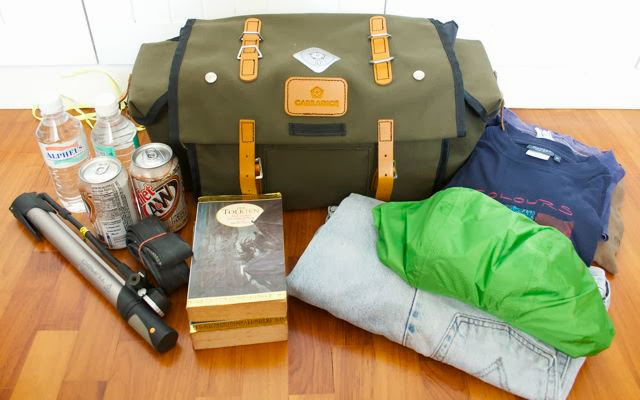 Yup, it all fits inside the bag.
Yup, it all fits inside the bag.
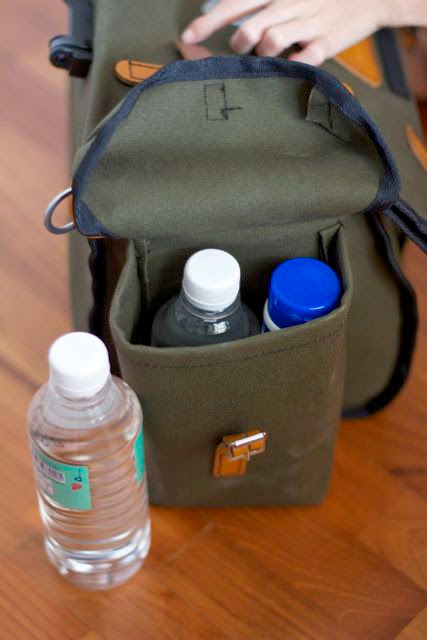
As the photograph suggests, it all fits in the Camper longflap with space to spare. In fact, you could still fit a hefty Trek cable lock in there. Bottles and tool pouches will fit into the side pockets. Each pocket is fastened by a leather strap and buckle. The lids overlap the tops of the pockets so rain water cannot drip inside. You can see a 400ml bottle tucked into the side pocket together with a tube of sunscreen. A 500ml bottle should fit, although just barely. A 330ml can will drop in easily.
Carradice declares the dimensions of the Camper longflap as 35cm wide x 24cm high x 23cm deep with a volume of 24 litres. If you multiply the linear dimensions, you'll find a discrepancy with the stated volume. It works out to a much smaller volume than 24 litres. Measuring from the edges of the black piping in each dimension, I found the actual dimensions to be 35cm wide x 22cm high x 19cm deep. With the longflap unfurled, I estimate you can get an extra 5-6cm of height. This works out to 14.6 litres with the longflap buttoned down and 18.6 litres with the longflap extended. Factor in another 1 litre per side pocket and you are good for 20.6 litres. This is a very respectable number when you consider the fact that a single Ortlieb Back Roller Classic rear pannier has a capacity of 20 litres (as spec'd, I have not measured an actual bag).
Will it fit my bicycle?
You will need to give this careful thought, especially if you are buying a large saddlebag to fit a small frame. If you are thinking of hanging it from the metal rings (or loops) at the back of your Brooks or Gilles Berthoud, all you have to do is thread the supplied leather straps through the loops and around the wooden dowel inside the saddlebag. Since the bag is supported from the top rear edge (my definition of the front of the bag is the face where the main buckles are located -- which faces the rear when mounted on a saddle), the bottom front edge will tend to point towards the ground. This must mean that the rear bottom edge of the bag will pivot towards your thighs as you sit in the saddle and make the wheels go round and round. You may or may not contact the bag with the back of your thighs. I gather that this is somewhat dependent on whether you have a straight or set back seatpost.
This is the least of your worries if you have a particularly small frame with not a whole lot of clearance between the saddle and the rear wheel. You may end up grinding away the bottom of your saddlebag with the tread of your rear tyre. Henceforth you may have little choice but to resign yourself to a pannier solution or a smaller saddlebag.
Having decided from the start that I did not want to risk being tormented by the nudging of the saddlebag against the back of my thighs, I decided to purchase a set of Carradice Bagman 2 Expedition QR supports. The Bagman 2 differs from the original Bagman in that it comes with additional support struts that attach to rack mounts on your seat stay or a purpose made seatpost collar. It also doesn't have bits that shake lose and fall off after too many jaunts down cobblestone lanes. You will want the Bagman 2. It is a much improved product. The Bagman 2 ships with a plastic adaptor that you see in the photograph below. This is attached to the top rear of the saddlebag with sturdy zip ties that are included in the package. The adaptor mates with the spring loaded pins on the Bagman support to implement the Quick Release (QR) feature.
 Quick release adaptor fitted to rear of saddlebag.
Quick release adaptor fitted to rear of saddlebag.
Should I get one?
Yes, if it fits your needs and if you don't have to go hungry to pay for it.













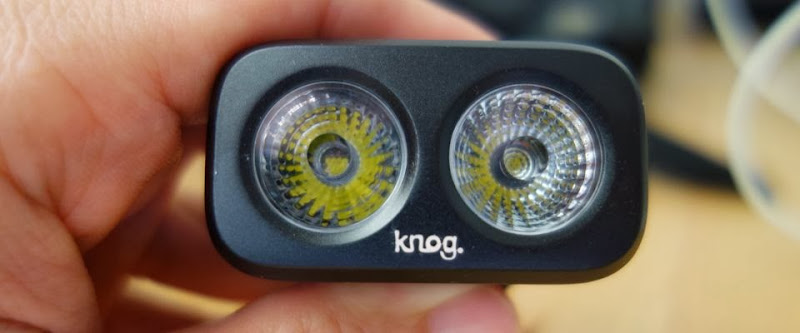
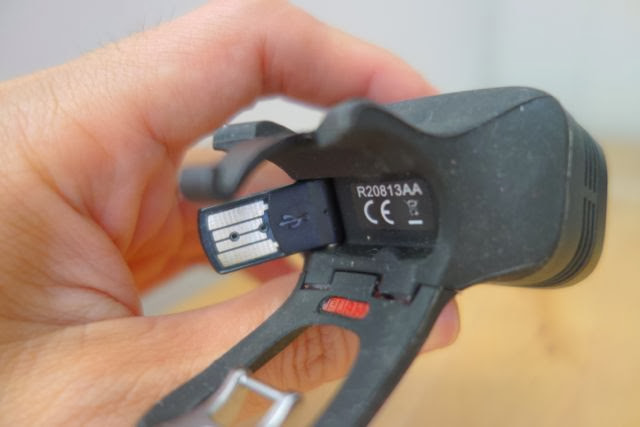 Here's the Knog with the USB charge plug flipped out and ready to charge.
Here's the Knog with the USB charge plug flipped out and ready to charge.




 Credit where credit is due! Thanks to Tim Parish for sharing his designs on
Credit where credit is due! Thanks to Tim Parish for sharing his designs on 

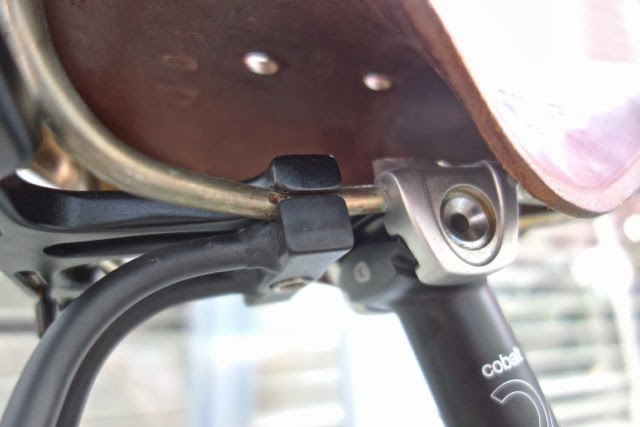
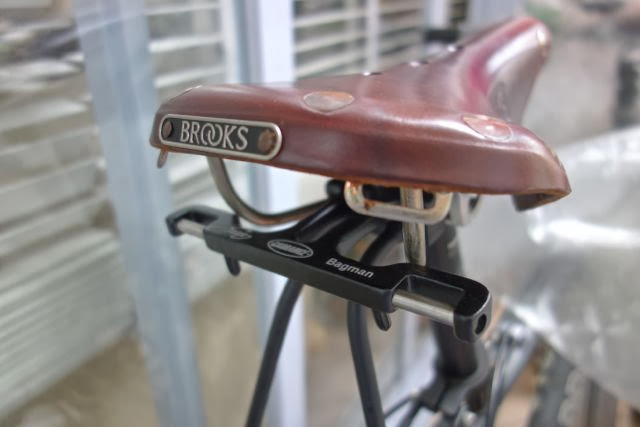
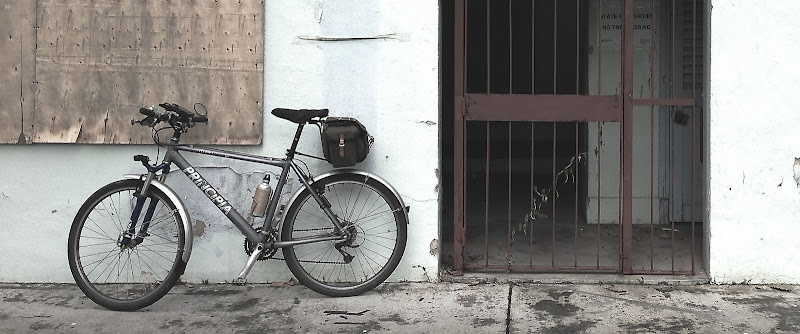

 Yup, it all fits inside the bag.
Yup, it all fits inside the bag.
 Quick release adaptor fitted to rear of saddlebag.
Quick release adaptor fitted to rear of saddlebag.
